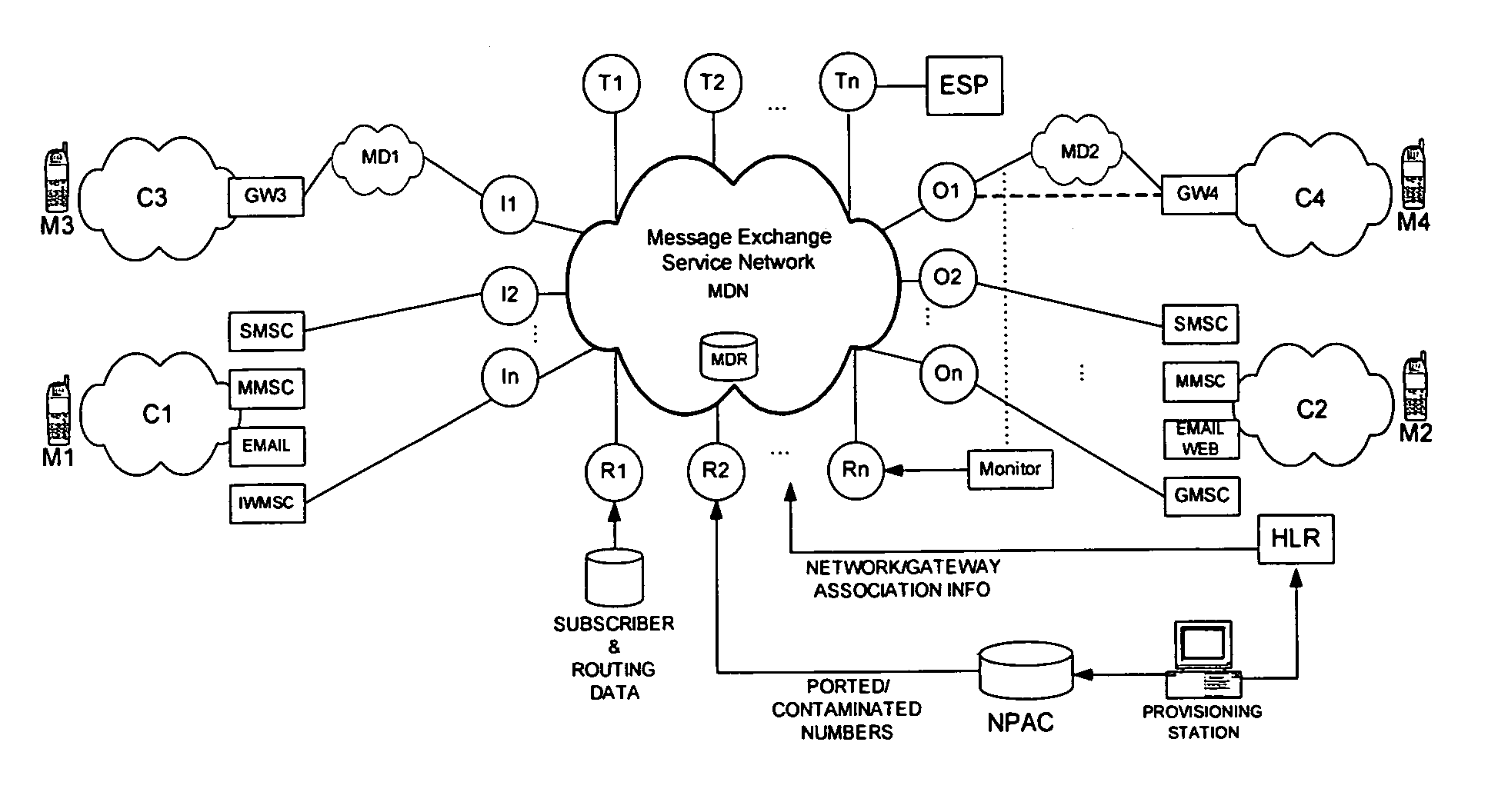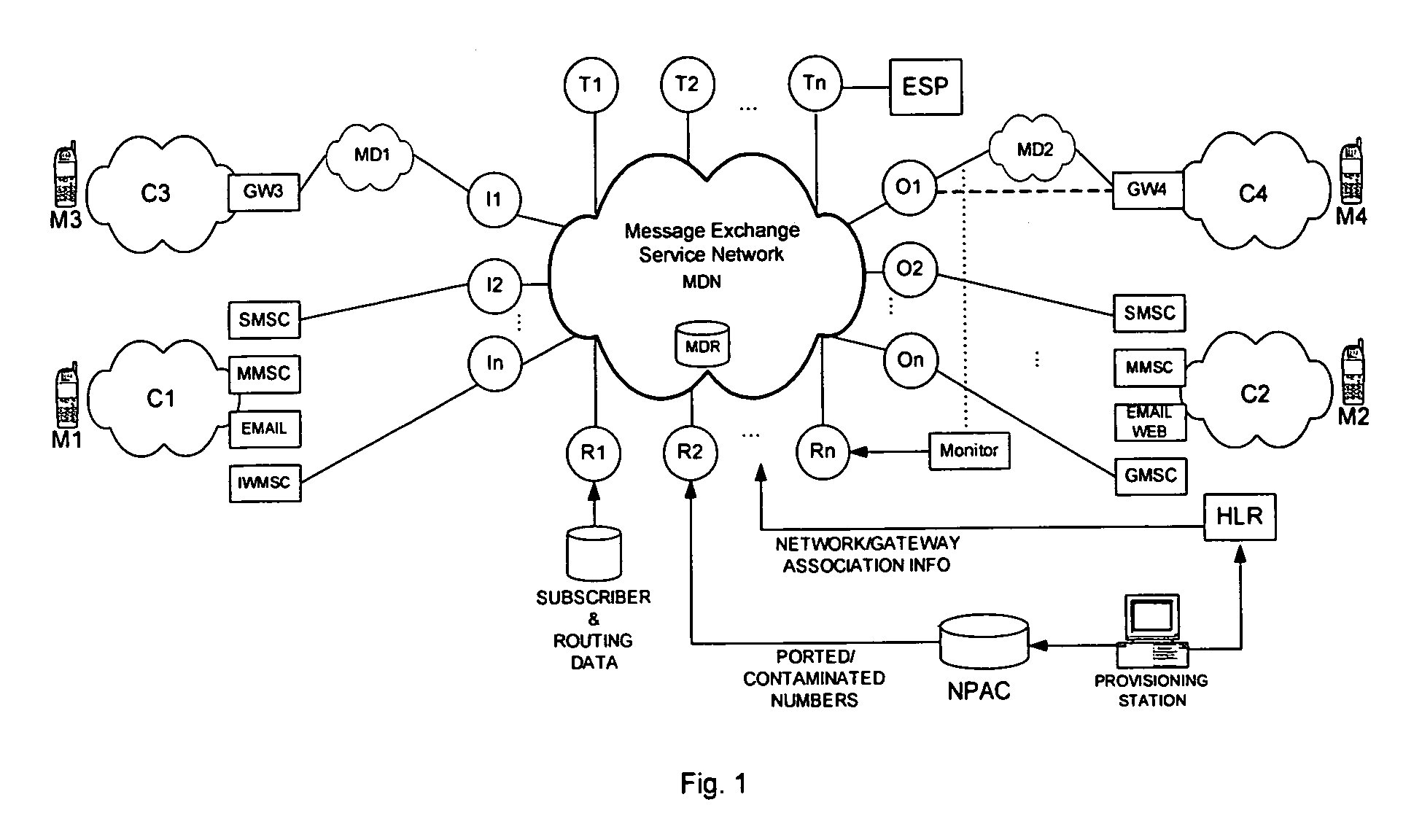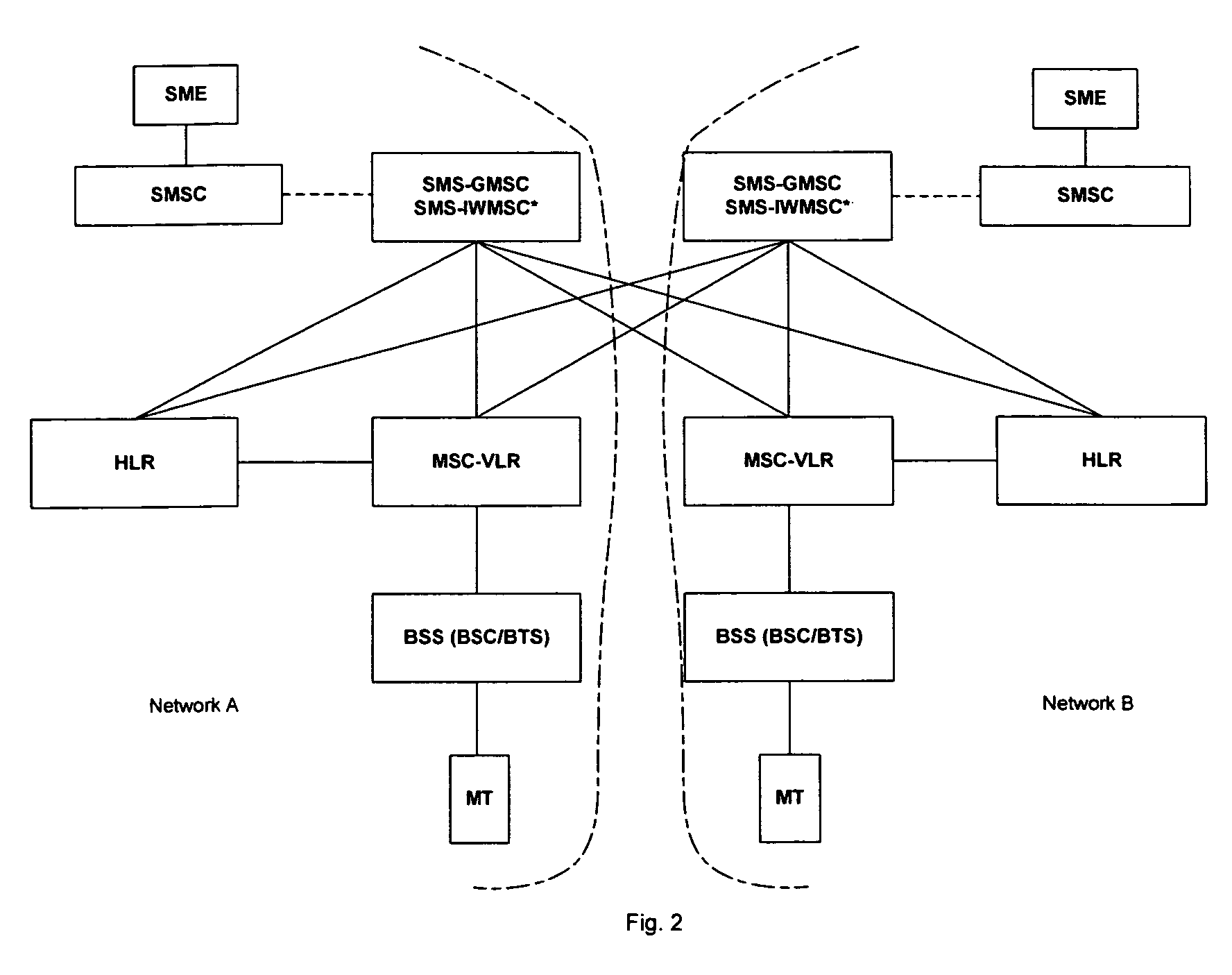Intermediary network system and method for facilitating message exchange between wireless networks
- Summary
- Abstract
- Description
- Claims
- Application Information
AI Technical Summary
Benefits of technology
Problems solved by technology
Method used
Image
Examples
Embodiment Construction
[0036]The present invention relates to interconnecting mobile networks that are complex and support multiple standards and business rules. Aspects of the present invention enable messages to be exchanged between two mobile units through application of many different functionalities including message transformations, accurate and optimal route lookups incorporating application of number portability and contaminated ranges, application of protocols, costing functions and business rules.
[0037]More specifically, the present invention relates to a method of facilitating routing of a message from one mobile network to another network that are interconnected by a service network and associated software control mechanisms. The message could be one of many formats including, but not limited to, a short message, email, and multimedia message. In accordance with aspects of the present invention, a message originated from a mobile unit may be passed through several gateways within the originati...
PUM
 Login to View More
Login to View More Abstract
Description
Claims
Application Information
 Login to View More
Login to View More - R&D
- Intellectual Property
- Life Sciences
- Materials
- Tech Scout
- Unparalleled Data Quality
- Higher Quality Content
- 60% Fewer Hallucinations
Browse by: Latest US Patents, China's latest patents, Technical Efficacy Thesaurus, Application Domain, Technology Topic, Popular Technical Reports.
© 2025 PatSnap. All rights reserved.Legal|Privacy policy|Modern Slavery Act Transparency Statement|Sitemap|About US| Contact US: help@patsnap.com



